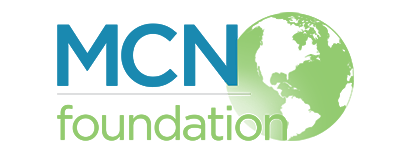November 2017
Leveraging Health Literacy and Patient Preferences to Reduce Hypoglycemic Events in Patients with Type 2 Diabetes
U.S. Food and Drug Administration – CDERLearn
August 2017
Resources for Healthcare Professionals
US Department of Health and Human Resources, National Institute of Environmental Health Sciences, Children’s Health, Additional Reading, Fact Sheets and Education
Save the Children, Technical and Policy Resources
WHO Guidelines on Child Health
Acceptable medical reasons for use of breast-milk substitutes
Antiretroviral therapy for HIV infection in infants and children
Baby-Friendly Hospital Initiative
Daily iron supplementation in infants and children
Diagnosis of HIV infection in infants and children
Fortification of maize flour and corn meal with vitamins and minerals
Fortification of maize flour and corn meal with vitamins and minerals
Guideline on HIV disclosure counselling for children up to 12 years of age
Guidelines for an integrated approach to nutritional care of HIV-infected children (6 month-14 years)
Guidelines on basic newborn resuscitation
Guidelines on neonatal seizures
Guidelines on the treatment of skin and oral HIV-associated conditions in children and adults
Home visits for the newborn child
IMCI chart booklet
Infant and young child feeding
Infant feeding in areas of Zika virus transmission
Manual for the health care of children in humanitarian emergencies
Manual on paediatric HIV care and treatment for district hospitals
Neonatal vitamin A supplementation
Pocket book of hospital care for children: Second edition
Updates on HIV and infant feeding
Updates on the management of severe acute malnutrition in infants and children
Use of multiple micronutrient powders for home fortification of foods consumed by infants and children 6–23 months of age
Vitamin A supplementation during pregnancy for reducing the risk of mother-to-child transmission of HIV
Vitamin A supplementation for infants 1–5 months of age
Vitamin A supplementation for infants and children 6-59 months of age
Weekly Iron-Folic Acid Supplementation (WIFS) in women of reproductive age
WHO child growth standards and the identification of severe acute malnutrition in infants and children
WHO guidelines on the pharmacological treatment of persisting pain in children with medical illnesses
WHO recommendations on postnatal care of the mother and newborn
WHO recommendations on the management of diarrhoea and pneumonia in HIV-infected infants and children
World report on child injury prevention
July 2017
Resources for Healthcare Professionals and the General Public – Hepatitis
CDC Hepatitis Training Resources
Hepatitis A Patient Education Resources
Hepatitis B Patient Education Resources
Hepatitis C Patient Education Resources
Resources for Healthcare Professionals and the General Public – Breastfeeding
WHO – 10 Facts on Breastfeeding
WomensHealth.gov – Breastfeeding Resources
The CDC Guide to Strategies to Support Breastfeeding Mothers and Babies
CDC, How Health Care Can Support Breastfeeding
La leche league – Breastfeeding for Parents
La Leche League International Information, resources, and a list of locations where breastfeeding mothers can find support
Text4baby – Free educational texts and reminders
Kaiser Permanente – Breastfeeding Your Baby
Breastfeeding Made Simple This interactive, multimedia Web resource provides information for breastfeeding mothers
The 111 Benefits of Breastfeeding for Babies, Moms & Everyone Else
Resources for Healthcare Professionals – Breastfeeding
Medscape is offering free CME (Continuing Medical Education) credit based on the recent Task Force recommendation on interventions to support breastfeeding. The article, “USPSTF Endorses Updated Breastfeeding Recommendations,” is intended for primary care clinicians, obstetrician-gynecologists, nurses, and other clinicians who may influence a mother’s decision to breastfeed her infant. Medscape requires registration (also free) in order to access the article and CME activity. To read the article and earn CME credit, go to http://www.medscape.org/viewarticle/871710.
Breastfeeding Resources for Health Care Providers
United States Breastfeeding Committee – Resources
Breastfeeding E-Learning Modules
Central Minnesota Breastfeeding Coalition
Louisiana Breastfeeding Coalition
Resources for Healthcare Professionals – Vaccine Administration
Centers for Disease Control and Prevention, Immunization Education and Training
JUNE2017
Elder Abuse Helplines and Hotlines – Always dial 911 or local police during emergencies.
National Center on Elder Abuse
National Institute on Aging
National Institute of Justice
Eldercare Locator
National Committee for the Prevention of Elder Abuse
CDC, Understanding Elder Abuse Fact Sheet
NCEA Scammed? Now What…
International Network for the Prevention of Elder Abuse
Resources for Healthcare Professionals
NCEA Red Flags of Abuse
Center of Excellence on Elder Abuse & Neglect. University of California Irvine School of Medicine
Nevada Care Connection, Elder Abuse Training Modules
Elder Abuse Training Video | DuPont Sustainable Solutions
MAY 2017
Healthcare Professional Resources
Office on Trafficking in Persons Training
Office on Trafficking in Persons Resources
Health Care Brochure
Health Care Provider Assessment Card
Social Services Brochure – Also available in Chinese, Indonesian, Korean, Spanish, Thai, and Vietnamese
Child Exploitation Poster – Also available in Indonesian, Korean, Spanish, Thai, and Vietnamese
Social Service Poster – Also available in Chinese, Indonesian, Korean, Spanish, Thai, and Vietnamese
ILO 2012 Global Estimate of Forced Labor Executive Summary
Resources from Polaris
CNN Freedom Project
World Health Organization – Human Trafficking
London School of Hygiene and Tropical Medicine – Care for Trafficked Persons Guidance for Health Providers
APRIL 2017
Resources for Healthcare Providers and the General Public
Malaria Fact Sheet
Malaria Information and Prophylaxis by Country
Malaria 101 for Health Care Provider
Harvard Medical School Patient Education Center – Malaria
MARCH 2017
Resources for Healthcare Providers
Stop TB Partnership – Factsheets & Information Brochures
TB Education and Training Networks
Tools for Health Care Providers
Find TB Resources
CDC Self-Study Modules on Tuberculosis
WHO – ENGAGE-TB Approach: Training Manual
WHO – ENGAGE-TB: Training of Community Health Works and Community Volunteers
Resources for the General Public
Fact Sheets, Guidelines, Brochures, Patient Education Series
February 2017
Resources for Healthcare Providers
CDC Training: Viral Hepatitis
CDC Public Health Grand Rounds – The 25th Anniversary of the Discovery of the Hepatitis C Virus
Viral Hepatitis Serology Training
The University of Washington – Seattle Prevention Training Center – Hepatitis B Web Study
The University of Washington – Hepatitis C Online Course
The National Hepatitis Training Institute
Fundamentals of Liver Disease: Free online CME Course Helps Physicians Identify and Care for Patients with Liver Disease
CDC Recommendations: One-Time HCV Testing and Linkage to Care for Persons Born 1945-1965
Can’t Afford a Cure: How Cost Keeps HCV Care Out of Reach
CDC Expert Commentary: Acute Hepatitis C Infection in Young Persons Who Use Drugs
CDC Expert Commentary: Hepatitis B Vaccine for Adults with Diabetes
CDC Expert Commentary: Testing for Hepatitis C: New Guidance
CDC Expert Commentary: The HIV/HCV Outbreak in Indiana
CDC Expert Commentary: Prevention of Perinatal Hepatitis B Transmission
Viral Hepatitis for Healthcare Professionals – Resource Center
World Health Organization, Guidelines for the Prevention, Care and Treatment of Persons with Chronic Hepatitis Be Infection
World Health Organization Hepatitis Publications
Resources for the General Public
Womenshealth.gov – Viral Hepatitis Fact Sheet
Viral Hepatitis – Patient Education Materials from the CDC
Centers for Disease Control and Prevention – Viral Hepatitis
January 2017
Resources for Healthcare Providers
World Health Organization, Comprehensive Cervical Cancer Control, A Guide to Essential Practice Second Addition
The New England Journal of Medicine, Saving the World’s Women from Cervical Cancer, June 30, 2016
RHO Cervical Cancer Training
Centers for Disease Control and Prevention – Global Health Protection and Security: Noncommunicable Disease Training Modules
International Agency for Research on Cancer, World Health Organization – Online Documents – Training Materials – Cervix Cancer
Community-based solutions for Cervical Cancer Screening: A Resource Guide for Service Providers
World Health Organization, Comprehensive Cervical Cancer Control, A Guide to Essential Practice Second Addition
Resources for the General Public
Foundation for Women’s Cancer – Cervical Cancer
Harvard Medical School, Patient Education Center – Cervical Cancer
National Cancer Institute – Cervical Cancer Prevention
December 2016
Centers for Disease Control and Prevention – Zika Training for Healthcare Providers
Centers for Disease Control and Prevention – Zika Virus: A Primer for Nurses
World Health Organization – Zika App
World Health Organization – Zika Virus and Complications: Questions and Answers
Centers for Disease Control and Prevention – Travelers’ Health
November 2016
MCN Learning – Hand Hygiene
Centers for Disease Control and Prevention – TB Education and Training
Centers for Disease Control and Prevention – Parasites Education and Training (Accredited Continuing Medical Education)
US Environmental Protection Agency – Children’s Environmental Health: Online Resources for Healthcare Providers
National Healthcare Safety Network Continuing Education Resources
Office of Disease Prevention and Health Promotion
Office of Disease Prevention and Health Promotion – Partnering to Heal: Teaming Up Against Healthcare-Associated Infections
US Food and Drug Administration – Women’s Health
Australian Commission on Safety and Quality in Health Care





